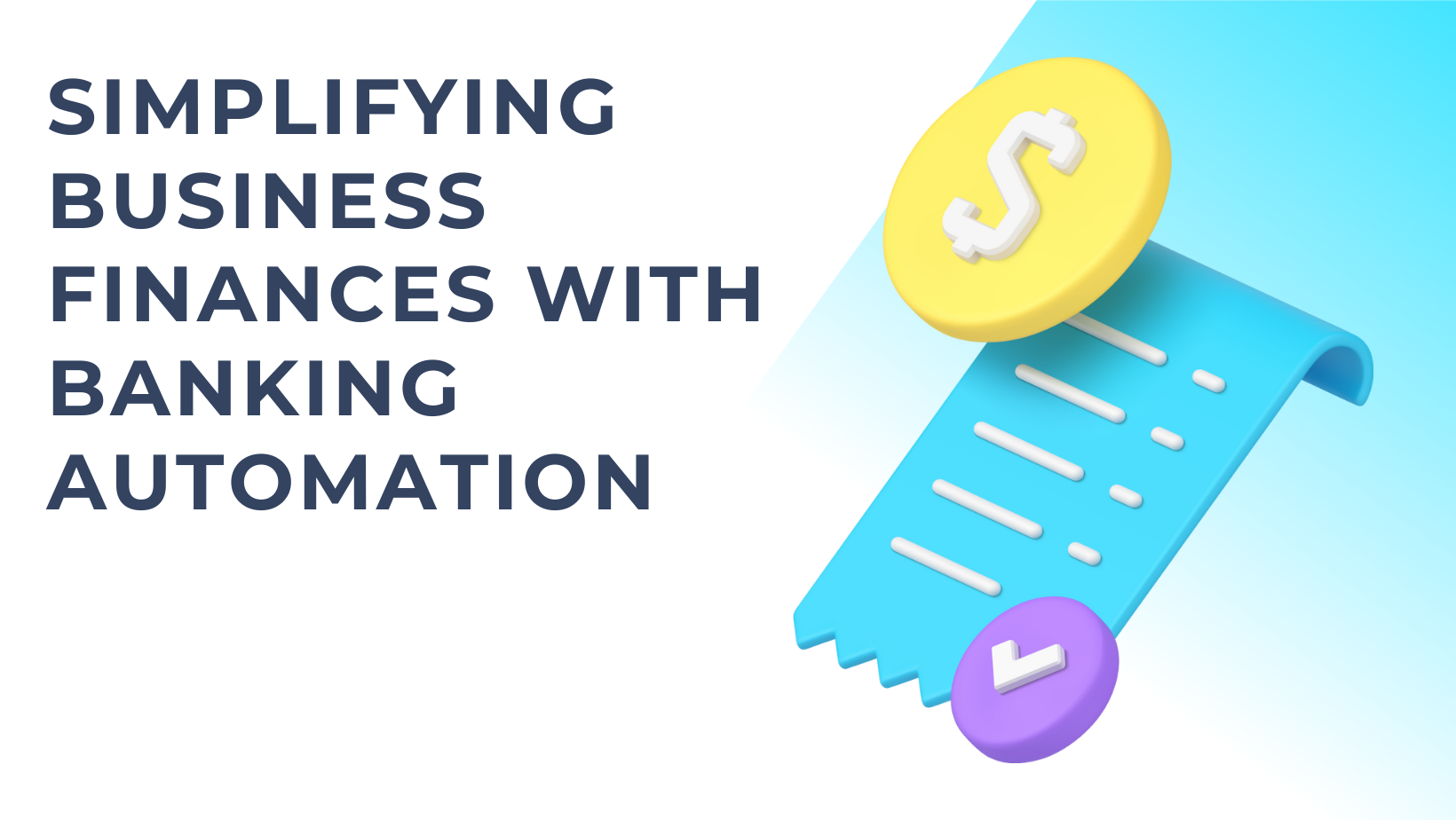Picture this: Emma, a dedicated entrepreneur, hunches over her desk, buried beneath a mountain of financial documents. Invoices, bank statements, and receipts form a labyrinth of paper around her. The constant tick of the clock serves as a stark reminder of the precious time slipping away—time she could be investing in growing her business. As she sifts through yet another stack of papers, a familiar feeling of overwhelm washes over her. If this scene strikes a chord with you, rest assured, you're in good company. Countless business owners find themselves entangled in the intricate web of financial management, yearning for a simpler solution. Enter banking automation—a revolutionary approach poised to transform this financial chaos into a well-oiled machine, empowering businesses like Emma's to flourish in ways they never thought possible.
In today's fast-paced business world, the integration of banking infrastructure and technology has become crucial for companies seeking to streamline their financial operations. This revolutionary approach to financial management is not just about replacing manual tasks with automated ones; it's about reimagining the entire financial ecosystem of a business. By leveraging cutting-edge technologies, companies can now create a seamless, efficient, and error-free financial workflow that adapts to their unique needs and scales with their growth.
The Old Way vs The New Way
For years, traditional financial management has been synonymous with long hours spent on manual data entry, tedious reconciliations, and the constant fear of human error. Business owners often found themselves buried under paperwork, struggling to maintain accurate records while juggling daily operations. This outdated approach not only consumed valuable time but also left room for mistakes that could lead to costly repercussions.
Enter banking automation — a revolutionary solution that is changing the game. By automating financial processes, businesses can shift from the cumbersome manual methods of the past to a more efficient and reliable system. Imagine a world where invoices are processed automatically, transactions are reconciled in real-time, and financial insights are just a click away. This is the promise of banking automation.
The Key Benefits of Banking Automation
The advantages of banking automation extend far beyond mere convenience. First and foremost, it saves time — an invaluable resource for any entrepreneur. With automated systems handling routine tasks, business owners can redirect their energy toward strategic initiatives that drive growth.
Moreover, banking automation significantly reduces human error. By minimizing manual data entry and automating reconciliations, businesses can ensure greater accuracy in their financial records. This leads to real-time financial insights that allow entrepreneurs to make informed decisions swiftly.
Cash flow management also sees a remarkable improvement through automation. Automated systems provide up-to-date information on incoming and outgoing funds, enabling business owners to anticipate cash flow challenges before they arise.
Security is another critical aspect where banking automation shines. Advanced encryption and secure access protocols protect sensitive financial data from potential breaches, giving business owners peace of mind.
How Banking Automation Works
At its core, banking automation simplifies complex financial processes through technology. It integrates seamlessly with existing systems — such as accounting software and payment platforms — creating a cohesive ecosystem where data flows effortlessly.
Imagine automatic reconciliation: as transactions occur, the system matches them against invoices and bank statements without requiring manual input. Invoice processing becomes a breeze as automated systems extract relevant data from documents and enter it into accounting software with precision.
This integration not only enhances efficiency but also provides businesses with a holistic view of their financial health at any given moment. To fully leverage these benefits, many companies turn to a business analysis services company to assess their current processes and identify the most effective automation strategies tailored to their specific needs.
Real-World Success Story
Consider the case of "Gourmet Delights," a small catering company that once struggled with its financial management. Overwhelmed by paperwork and frequent errors in invoicing, the owner decided to implement banking automation solutions. Within weeks, they noticed significant improvements: invoices were processed automatically, cash flow was tracked in real time, and reconciliation errors dropped dramatically.
As a result, Gourmet Delights not only saved hours each week but also gained confidence in their financial reporting. This newfound clarity allowed them to make strategic decisions about expanding their services — ultimately leading to increased revenue and growth. The company's success story serves as a testament to the transformative power of banking automation for businesses of all sizes.
Overcoming Implementation Challenges
Despite its many benefits, some business owners may hesitate to adopt banking automation due to concerns about cost or the learning curve associated with new technology. However, many providers offer scalable solutions tailored to different budgets and needs, making them accessible to businesses of all sizes.
Additionally, comprehensive training resources are readily available to help teams adapt quickly to new systems. This ensures a smooth transition and maximizes the benefits of automation from day one. Data security concerns are also addressed through robust encryption measures and compliance with industry standards — ensuring that sensitive information remains protected throughout the automation process.
The Future of Business Finance
Looking ahead, the future of banking automation is bright and filled with exciting possibilities. Emerging trends such as artificial intelligence (AI) and machine learning promise even greater efficiencies in financial management. Imagine predictive analytics tools that not only track current cash flow but also forecast future trends based on historical data, helping businesses make proactive financial decisions.
As technology continues to evolve, businesses will have access to increasingly sophisticated tools that simplify finances further while enhancing strategic decision-making capabilities. These advancements will enable companies to stay ahead of the curve in an ever-changing business landscape, adapting quickly to new challenges and opportunities.
Conclusion
In conclusion, banking automation is revolutionizing how businesses manage their finances — turning chaos into clarity and empowering entrepreneurs like Sarah to focus on what truly matters: growth and innovation. By embracing this technology, companies can streamline their operations, reduce errors, and gain valuable insights that drive success.
If you're ready to embrace this transformative power for your own business, now is the time to explore your options for banking automation. Take the first step towards financial efficiency and peace of mind. Say goodbye to drowning in paperwork and hello to a streamlined future where your finances work for you, propelling your business to new heights of success.
















Post Comments